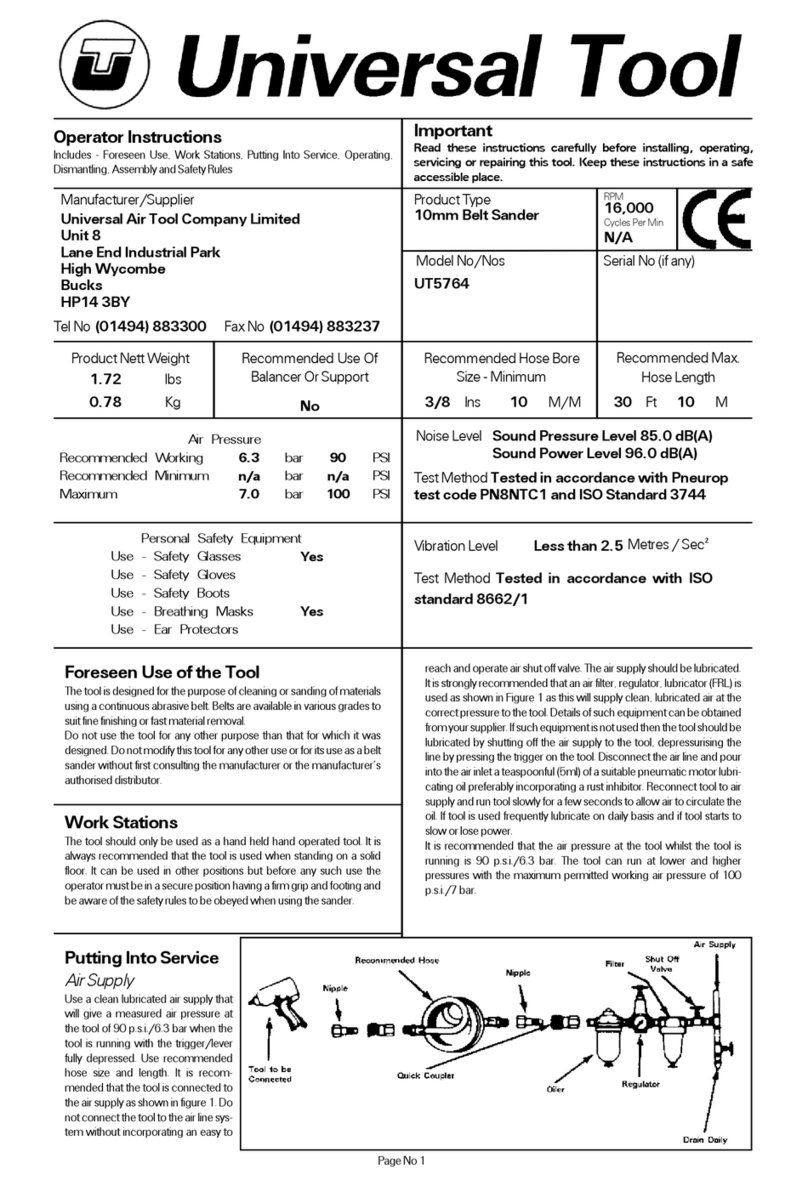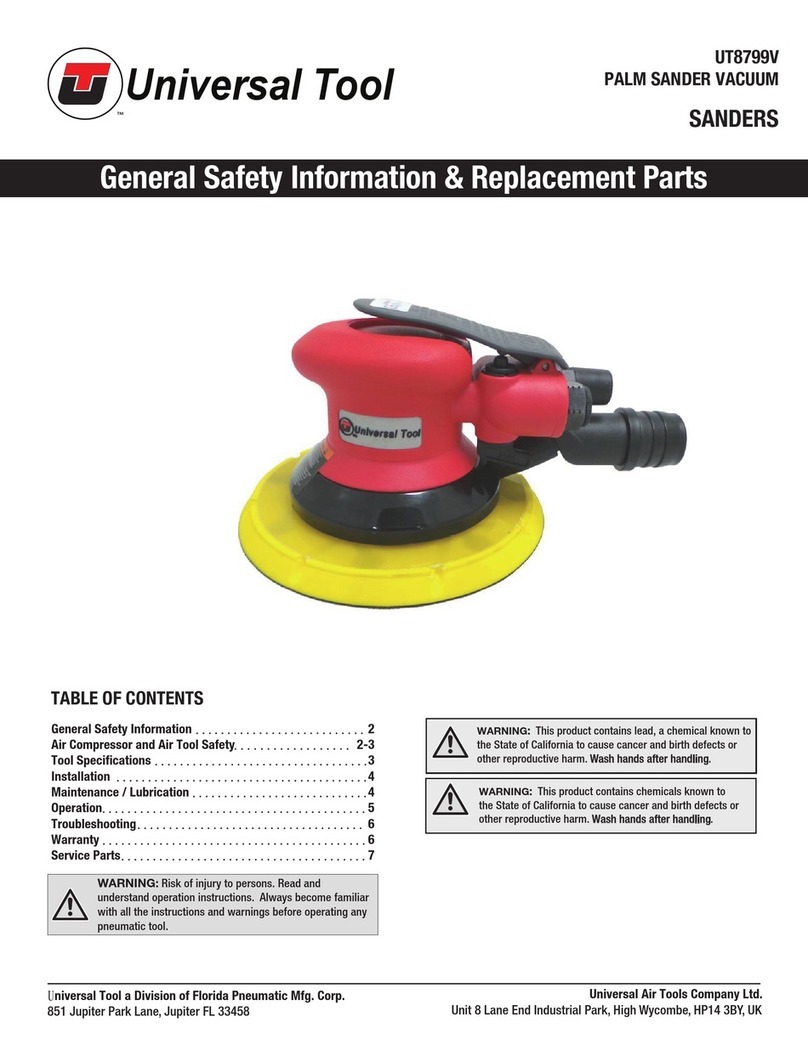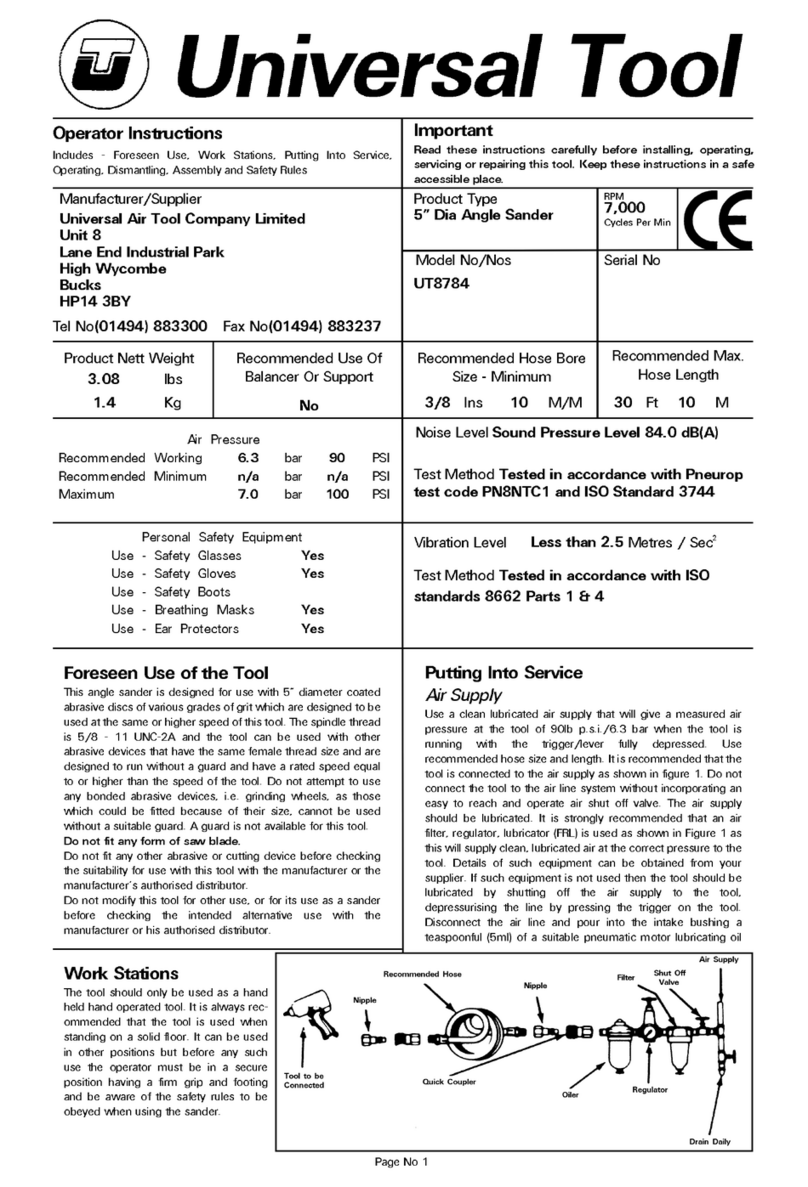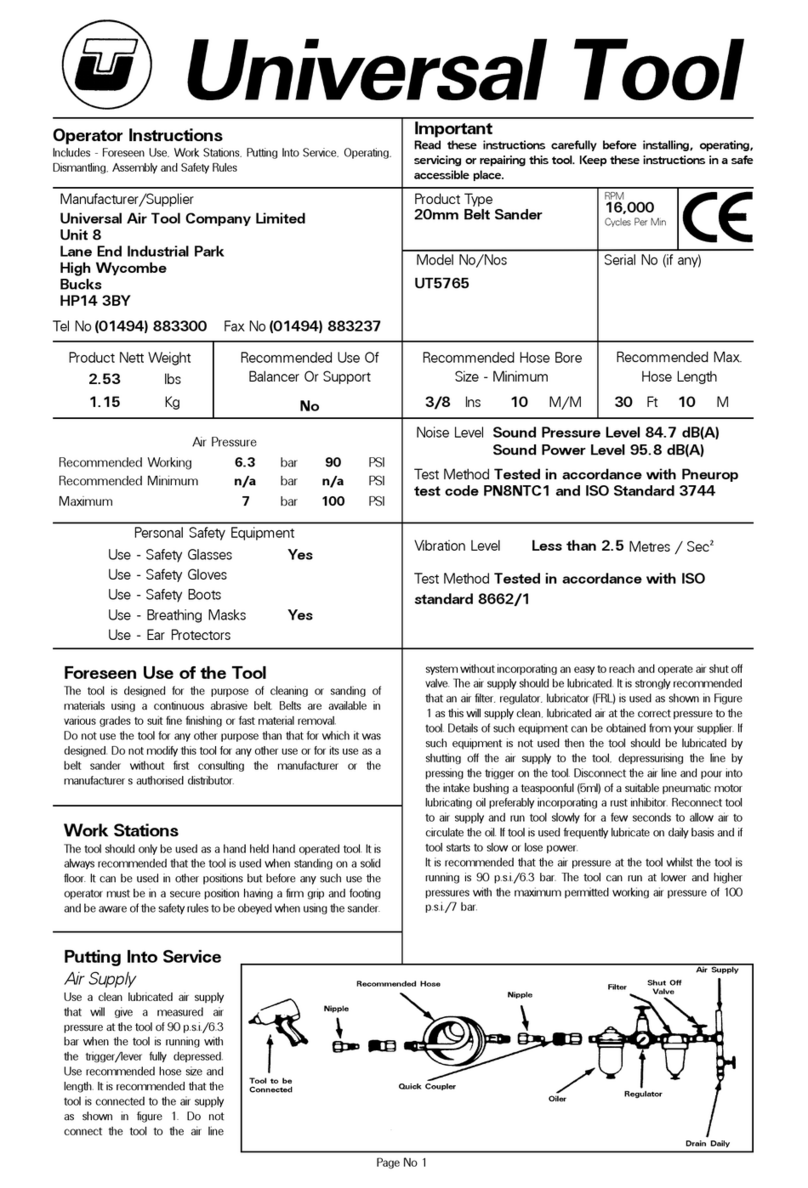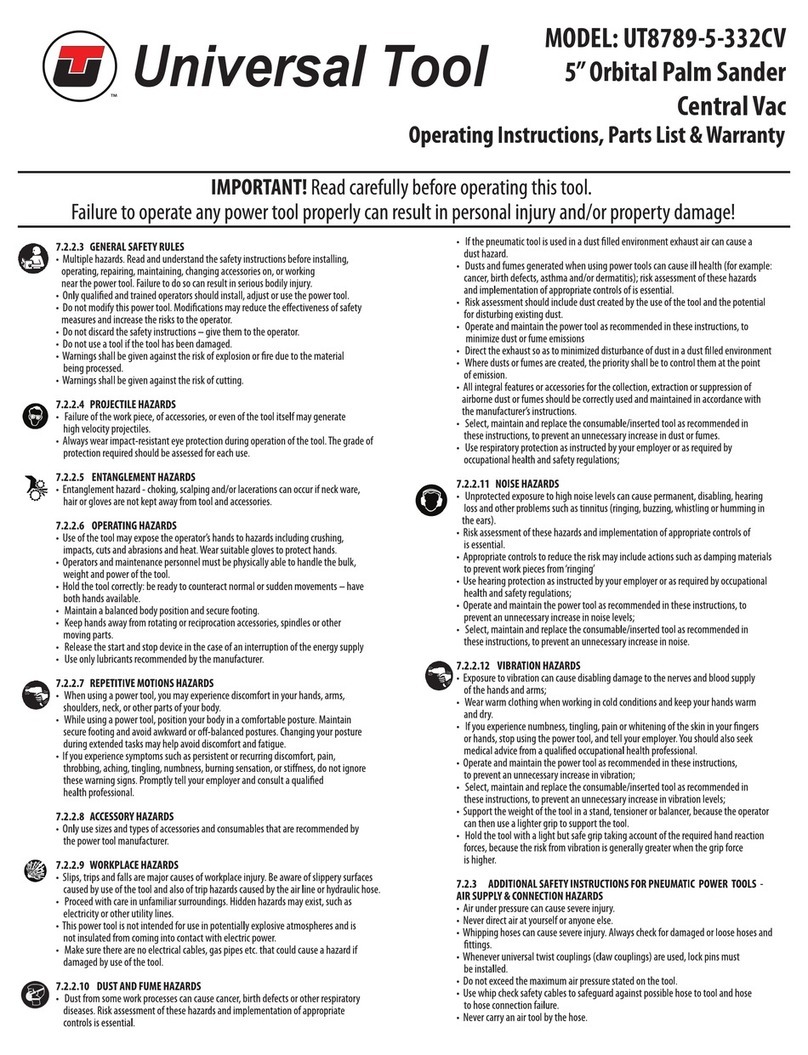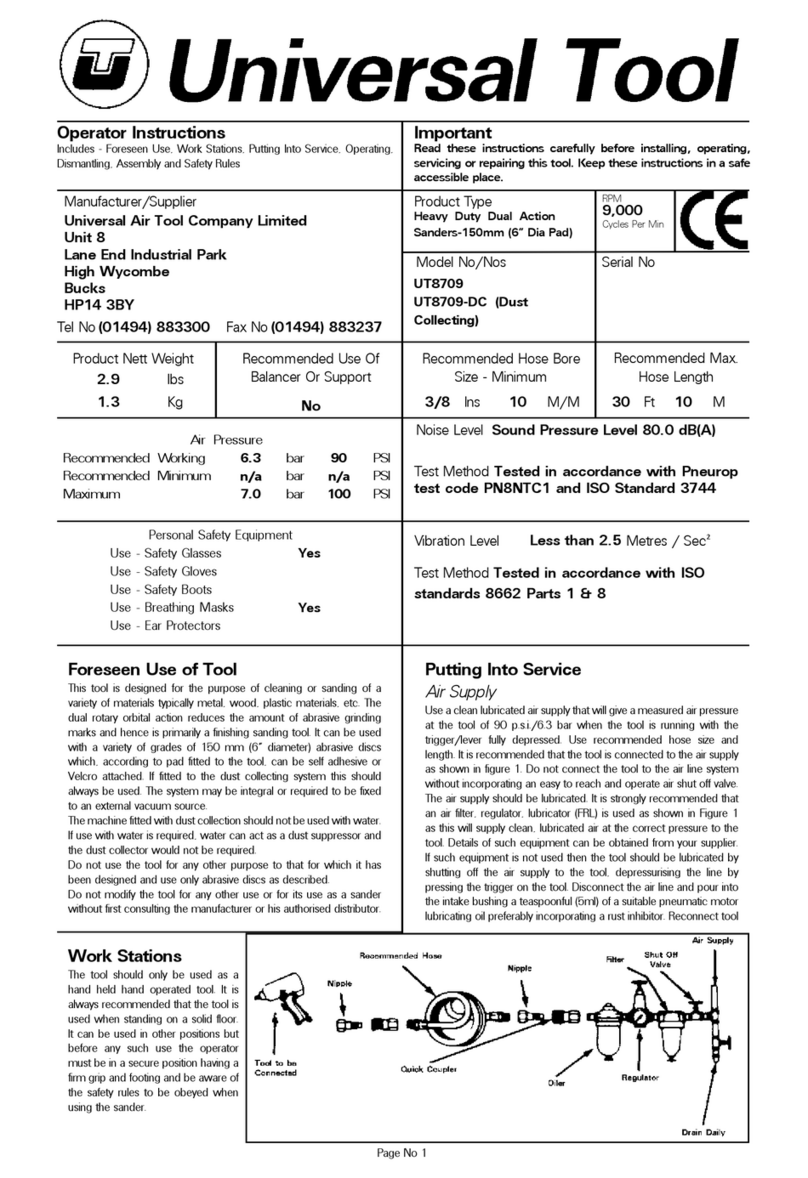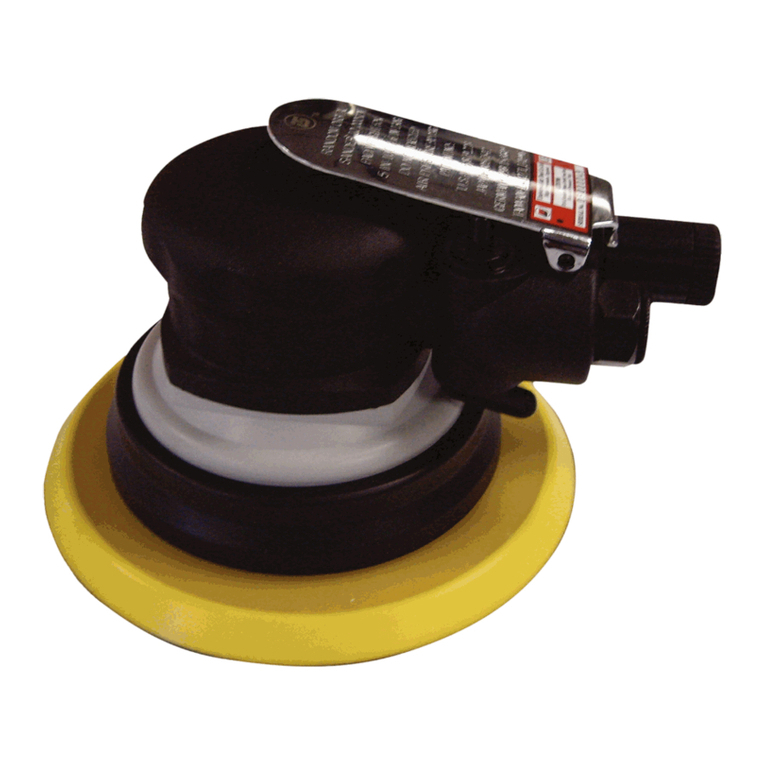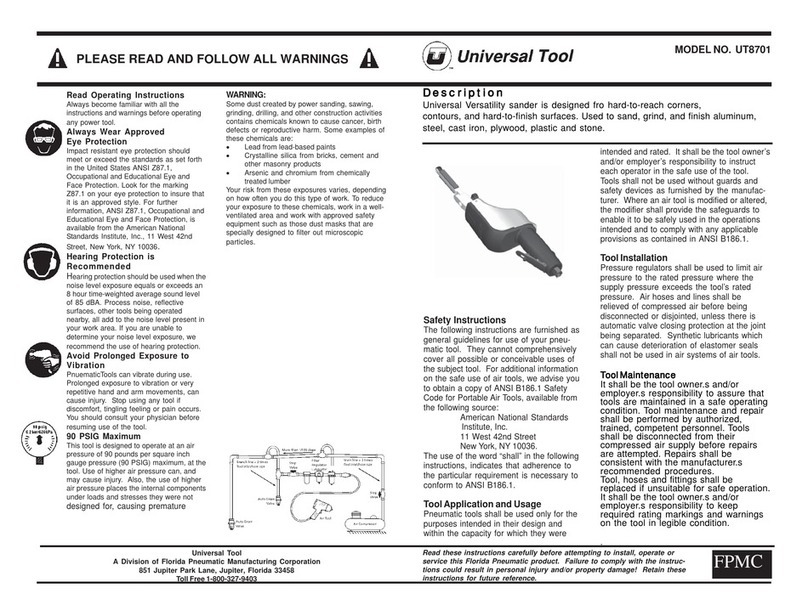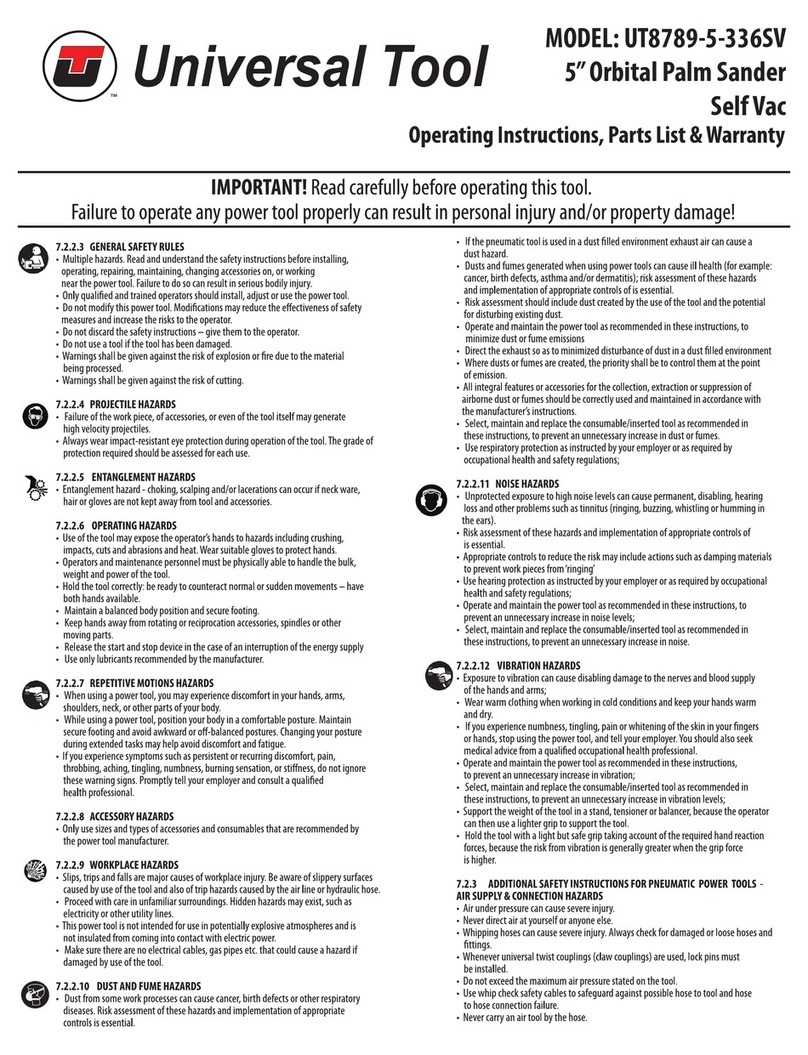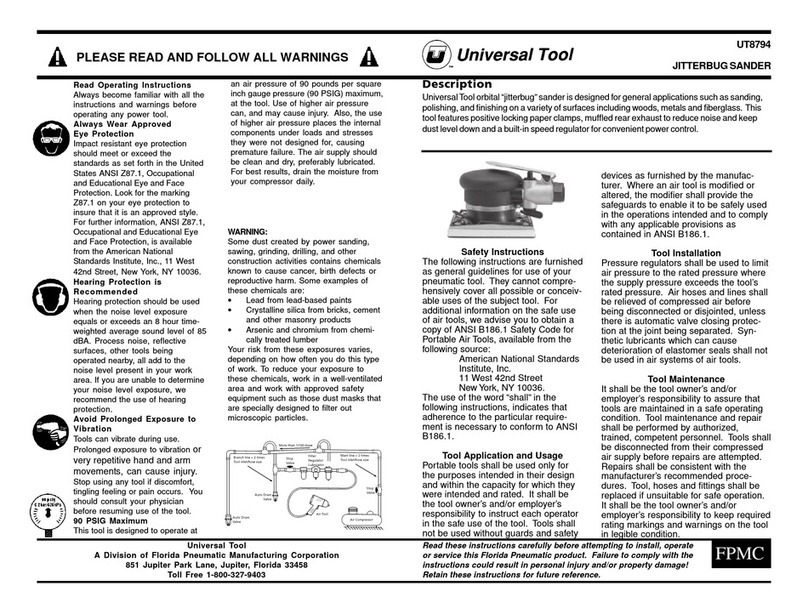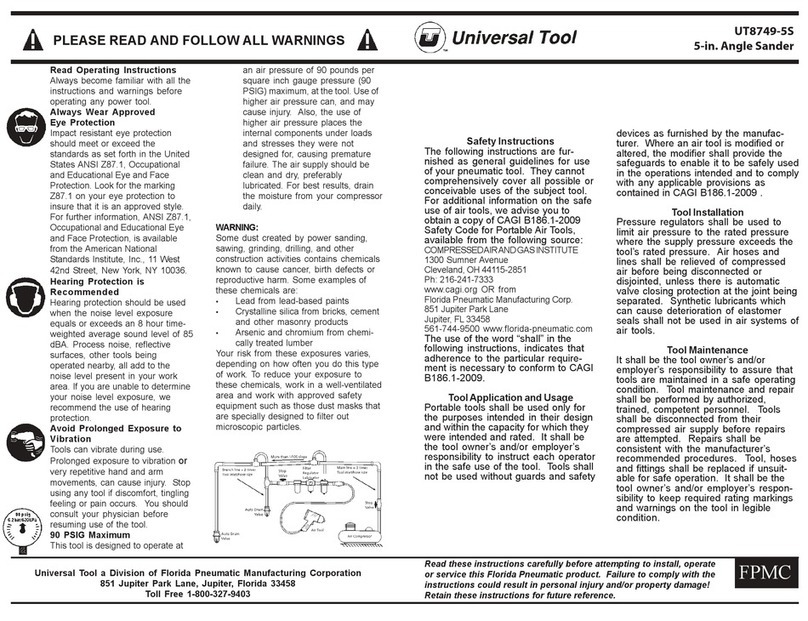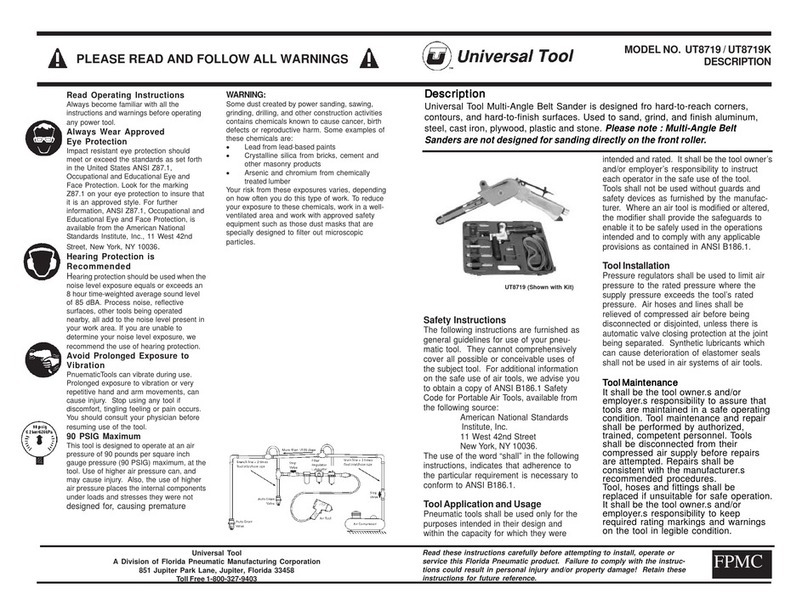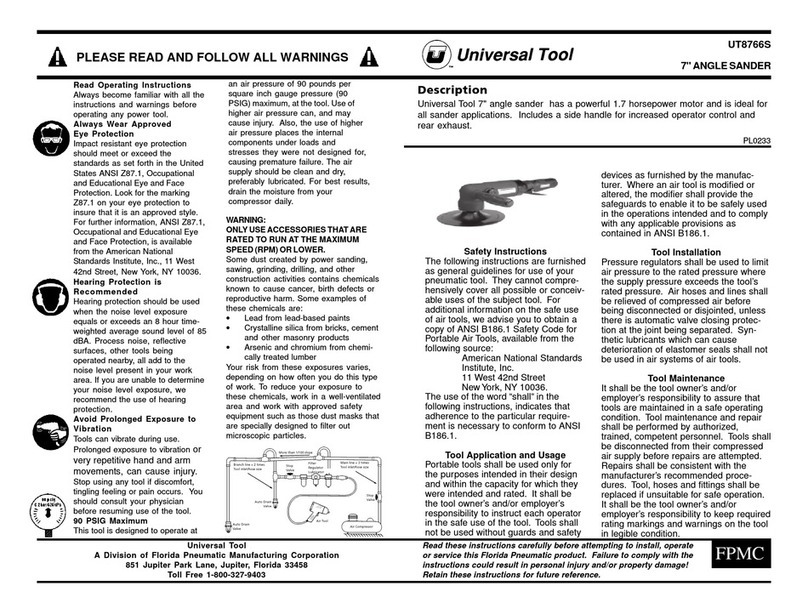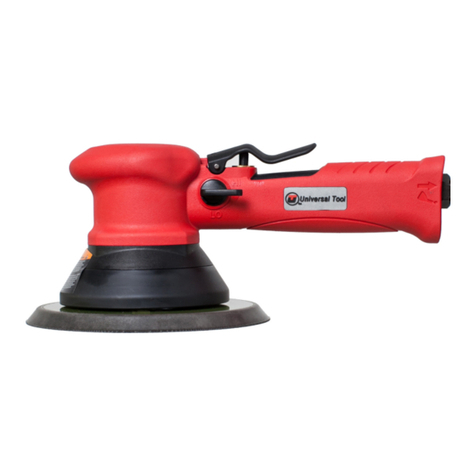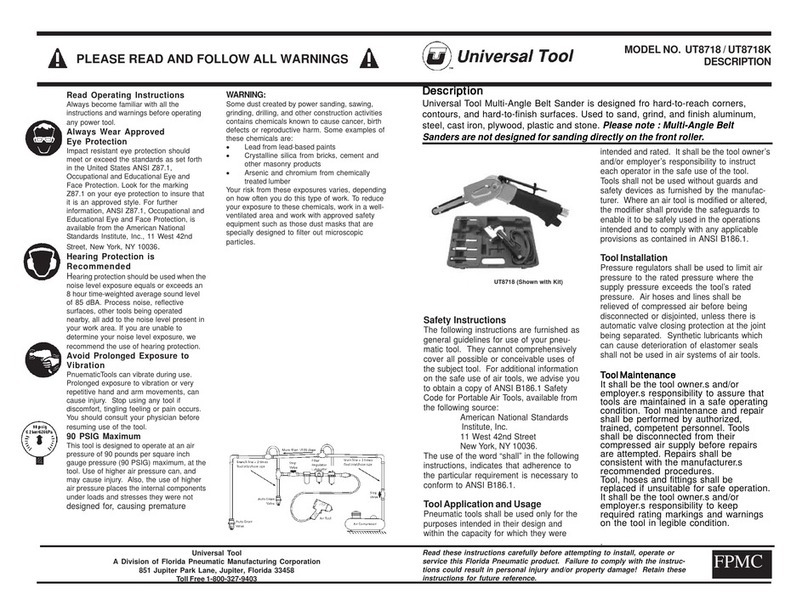
Operating
Select a suitable abrasive disc (see Section "Foreseen use of the tool")
and make sure that it is fixed securely to the tool. Connect to suitable
air supply as recommended. Make sure that the side handle is
tightened securely.
Apply the sander lightly to the work and allow the abrasive disc to cut.
Take great care when sanding around sharp edges and surfaces to
avoid the disc snagging i.e. the disc may be brought to an abrupt stop
or considerably slowed that will cause the tool to kick in the hands.
It is always recommended to use safety glasses and a breathing
mask. The sanding of certain materials may create a hazardous dust
which may require special breathing equipment. Check before using
the tool. Even if the machine has a low noise level the actual sanding
process may cause a noise level such that ear protectors will be
required. If there are sharp areas on the material being sanded safety
gloves are recommended.
Do not continue to use abrasive discs that are worn or clogged. This
will make the sanding process inefficient and the need to apply
unnecessarily high forces to the tool.
Do not use undersized or oversized sanding discs. The disc should be
no more than 1/4" larger in diameter than the pad, and not smaller
than the pad.
Dismantling & Assembly Instructions
Disconnect tool from air supply.
The two tools are identical except for the speed. The variation is in the
pinion(25) and bevel gear (31) and the rotor (20) - see parts list.
Grip the tool in a vice fitted with soft jaws and unscrew side handle (27).
Remove polishing mop if fitted and with the spanner and peg spanner
provided by use of the holes in nut (41) and the flats on work spindle
(33), remove the nut (41) and pad (40). Remove 4 off capscrews (37)
and 4 off lockwashers (4) to remove the housing cap (36) with gasket
(47) and the work spindle assembly. Remove retaining rings (39) and
(29). Remove wave washer (30), bevel gear (31) and key (32). Press
out bearing (38) with work spindle (33) from housing cap(36) and
bearing (38) off of the work spindle (33). The bearing plate (28) and
bearing (7) may be removed from the motor housing (26) by use of
a small rod through the hole in the top of the head of the motor housing.
Remove 2 off screws (35) and exhaust deflector (34). Remove hose
adaptor (1), drive out lever pin (6) and remove lever (5).
With a wide bladed screwdriver unscrew valve screw (14) and take
out O-ring(13), O-ring (12), air regulator (11), spring (10), valve stem
(8) and O-ring (9). Do not remove throttle bushing (7) from handle (2).
Remove 4 off capscrews (3) and 4 off lockwashers (4) to remove
handle (2) and housing band (45) and gasket (46). Pull out the motor
and pinion gear drive assembly.
Grip the motor assembly by hand and tap the splined end of the rotor
(20) with a non-metallic or soft metal (lead or aluminium) hammer to
drive the motor assembly through the pinion (25) and bearing (24)
assembly. The pinion may be pressed out of the bearing. Grip the front
end plate and again tap the rotor (20) with a hammer as above to
remove the rotor from the front end plate and bearing assembly.
Remove cylinder (22) complete with pin (21) and take out 4 off rotor
blades (19) from rotor (20). Remove bearing cover (15) and retaining
ring(16). With a piece of tube with a bore diameter as close as
possible to the maximum diameter of the rotor, tap the non splined
end of the rotor to drive the rotor through the rear end plate and
bearing assembly. With a suitable punch remove bearing (17) from
rear end plate (18) and bearing (17) from front end plate (23).
Reassembly
Clean all parts and examine for wear. Look in particular for wear and
cuts on O-rings. Coat all parts in a pneumatic tool lubricating oil,
preferably one including a rust inhibitor, grease all bearings and bevel
gears and reassemble in the reverse order. See note on motor
assembly build.
Motor Assembly
If fitting a new rotor very lightly deburr the edges of the rotor slots.
Make sure rotor blade slots are clean. Make sure that the faces of the
front and rear end plates (23) and (18) that abut cylinder (22) are free
from burrs and surface marking. If necessary lap faces on a flat, very
fine grade of abrasive paper.
Press bearing (17) into end plates (23) and 18). Support bearing (17)
in rear end plate on the inner race and tap rotor on the gear end with
a soft metal or non metallic hammer until the rotor locates against the
face of the rear end plate. Support the inner face of the rear end plate
in a piece of tube with a bore diameter as close as possible to the
largest diameter of the rotor and tap the non splined end until a
clearance of .040mm (0.0015”) to .065mm (0.0025”) is obtained
between the inner face of the rear end plate and the rotor. This
clearance to be checked when pulling the rotor by hand away from
the rear end plate and bearing assembly.
Spin rotor to ensure that it will spin freely in the rear end plate and
bearing assembly. Fit rotor blades and cylinder ensuring that the pin in
one end of the rotor cylinder locates in the round hole in the rear end
plate. Push on front end plate and check that rotor still rotates freely.
the oil. If tool is used frequently lubricate on daily basis and if tool starts
to slow or lose power.
It is recommended that the air pressure at the tool whilst the tool is
running is 90 p.s.i./6.3 bar. The tool can run at lower and higher
pressures with the maximum permitted working air pressure of 100
p.s.i./7 bar. The tool incorporates an air regulator to reduce the speed
of the tool if required.
Page No 2
Safety Rules For A Sander/Polisher
1) Read all the instructions before using this tool. All operators must be
fully trained in its use and aware of these safety rules.
2) Do not exceed the maximum working air pressure.
3) Use personal safety equipment.
4) Use only compressed air at the recommended conditions.
5) If the tool appears to malfunction remove from use immediately
and arrange for service and repair.
6) If the tool is used with a balancer or other support device ensure
that it is fixed securely.
7) Always keep hands away from the working attachment fitted to the
tool.
8) The tool is not electrically insulated. Never use the tool if there is any
chance of it coming into contact with live electricity.
9) Always when using the tool adopt a firm footing and/or position
and grip the tool firmly to be able to counteract any forces or reaction
forces that may be generated whilst using the tool.
10) Use only correct spare parts. Do not improvise or make
temporary repairs.
11) Do not lock, tape, wire, etc. the on/off valve in the run position.
The trigger/lever etc. must always be free to return to the 'off' position
when it is released.
12) Always shut off the air supply to the tool, and depress the
trigger/lever etc. to exhaust air from the feed hose before fitting,
adjusting or removing the working attachment.
13) Check hose and fittings regularly for wear. Replace if necessary.
Do not carry the tool by its hose and ensure the hand is remote from
the on/off control when carrying the tool with the air supply connected.
14) Take care against entanglement of moving parts of the tool with
clothing, ties, hair, cleaning rags, etc. This will cause the body to be
drawn towards the tool and can be very dangerous.
15) It is expected that users will adopt safe working practices and
observe all relevant legal requirements when installing, using or
maintaining the tool.
16) Do not install the tool unless an easily accessible and easily
operable on/off valve is incorporated in the air supply.
17) Take care that the tool exhaust air does not cause a problem or
blows on another person.
18) Never lay a tool down unless the working attachment has
stopped moving.
19) Always check the speed of the attachment is higher than the
